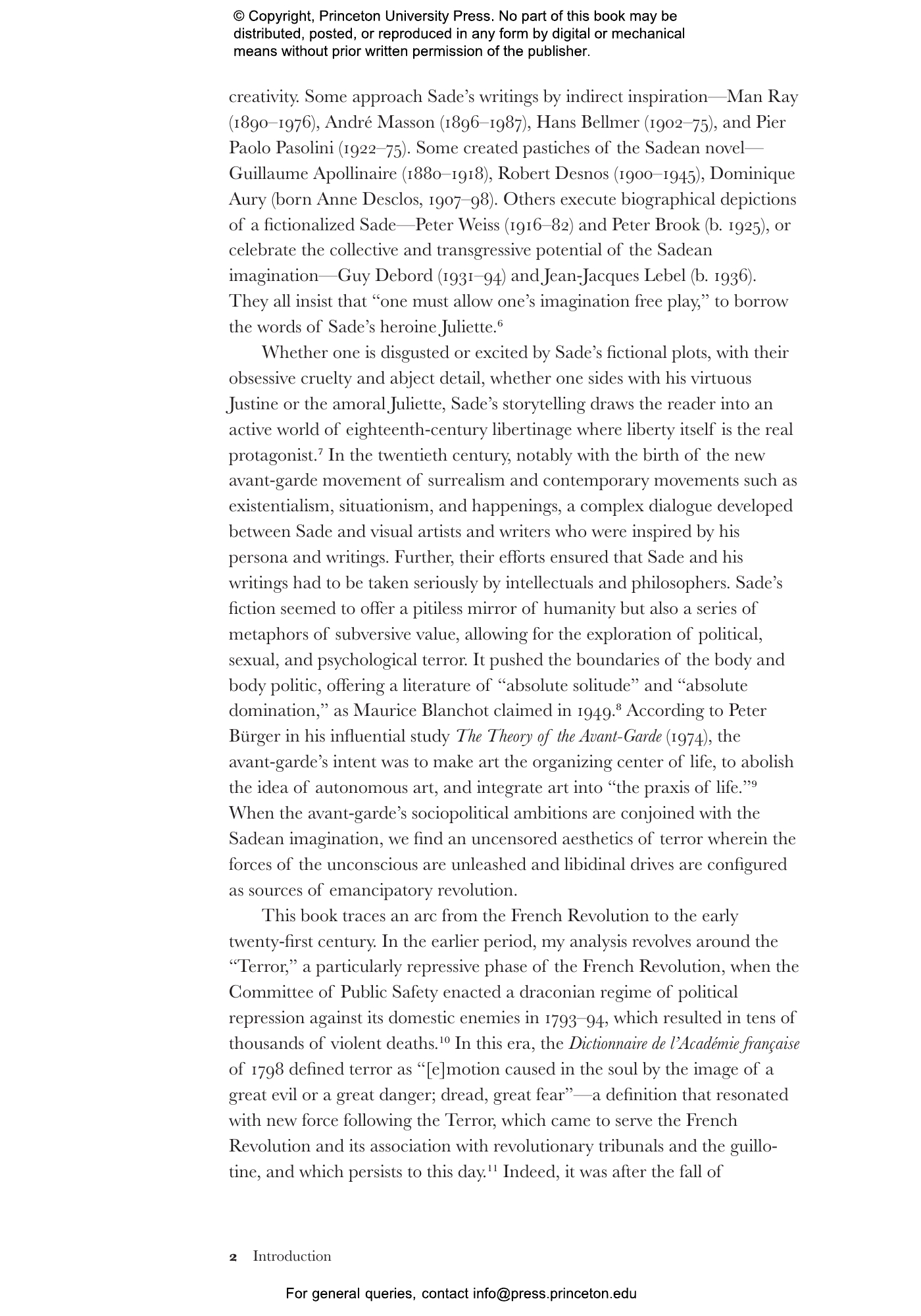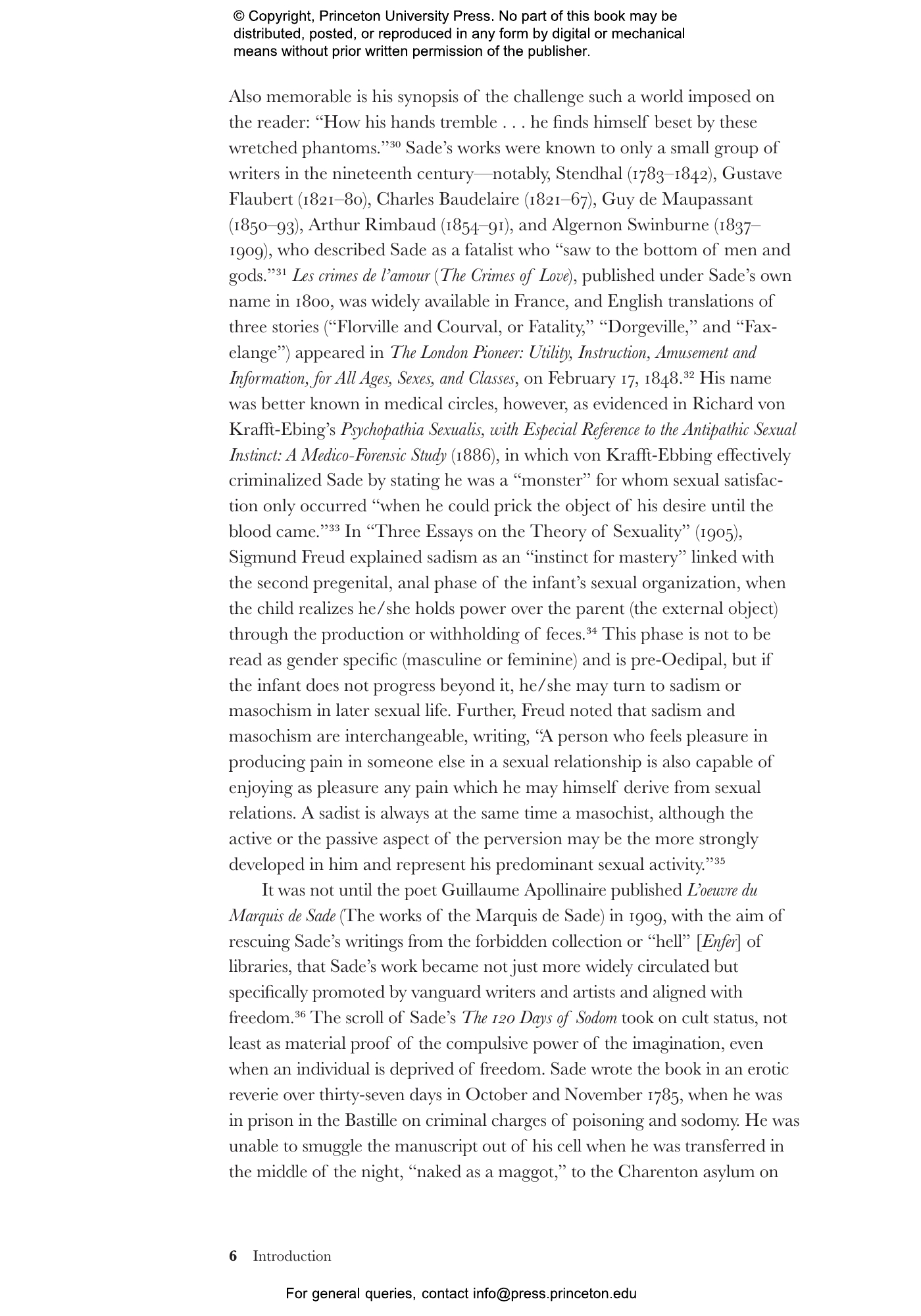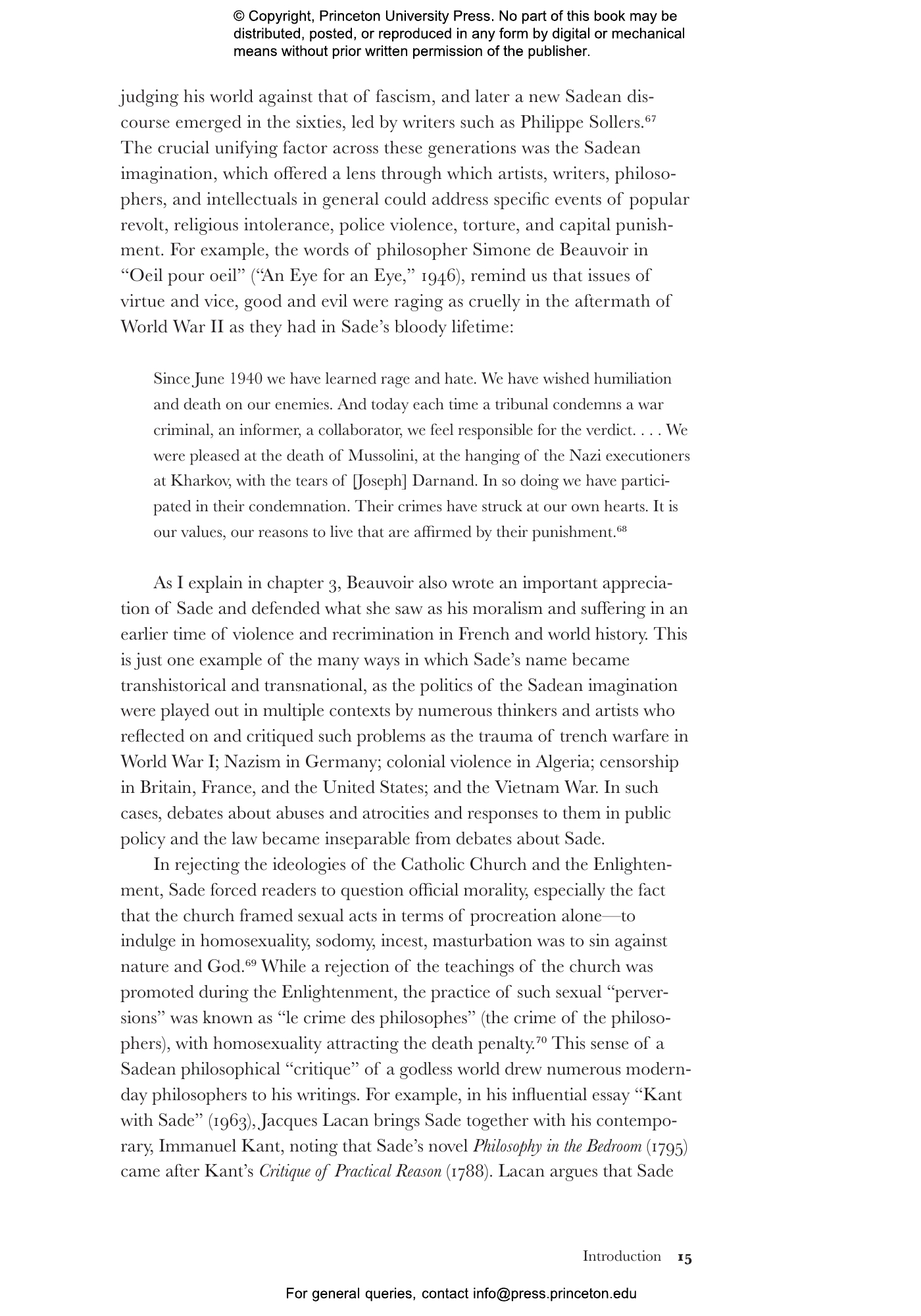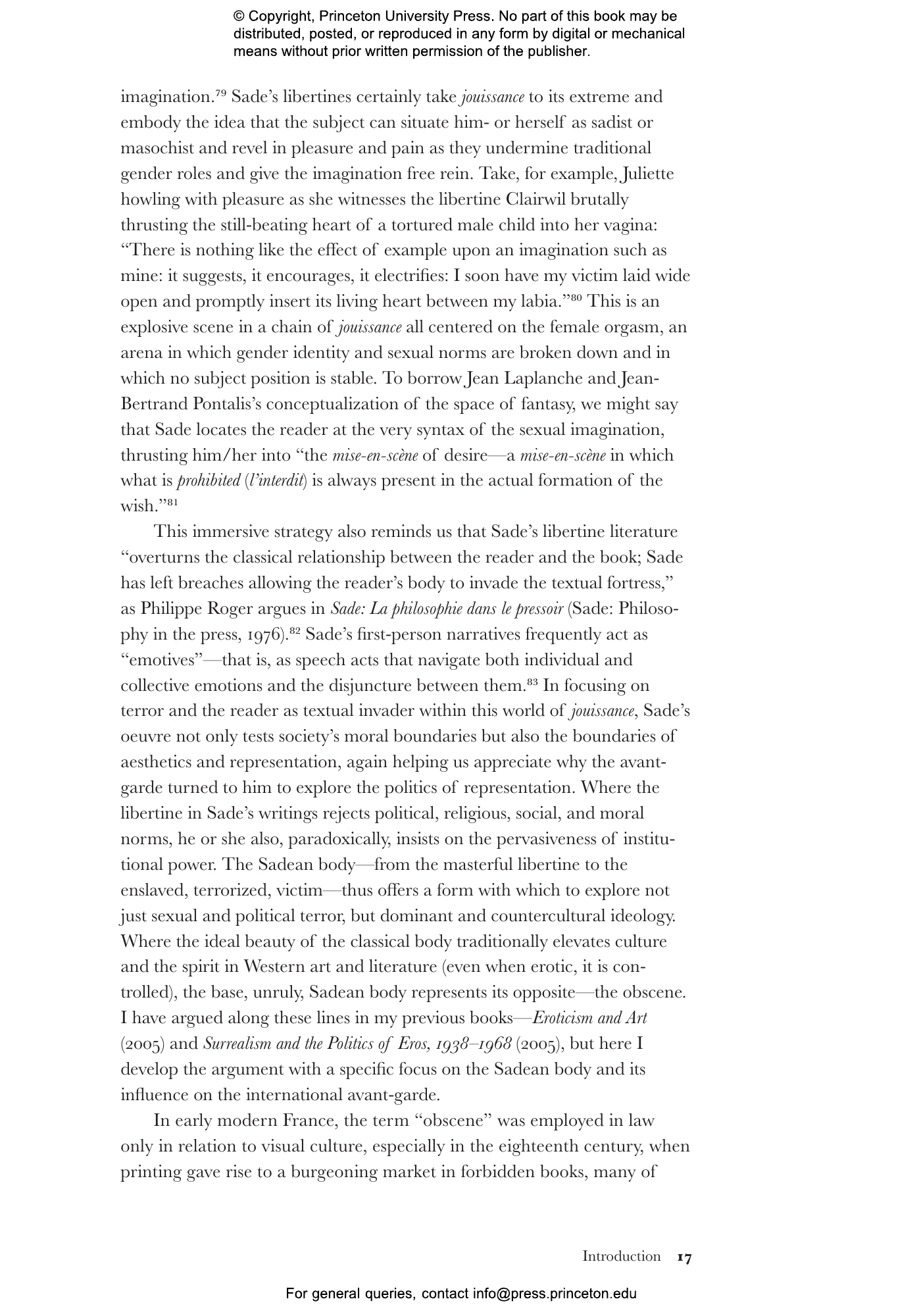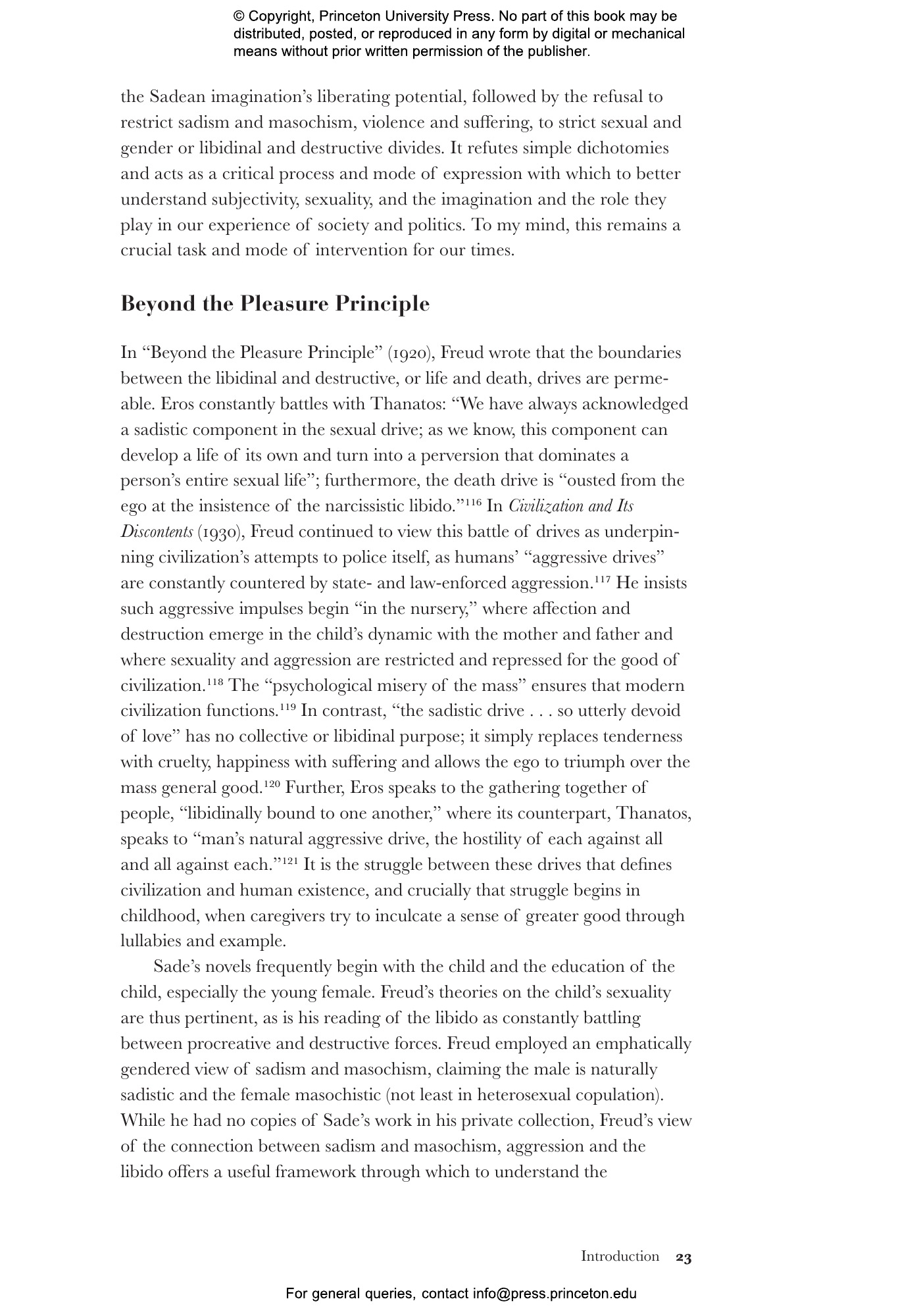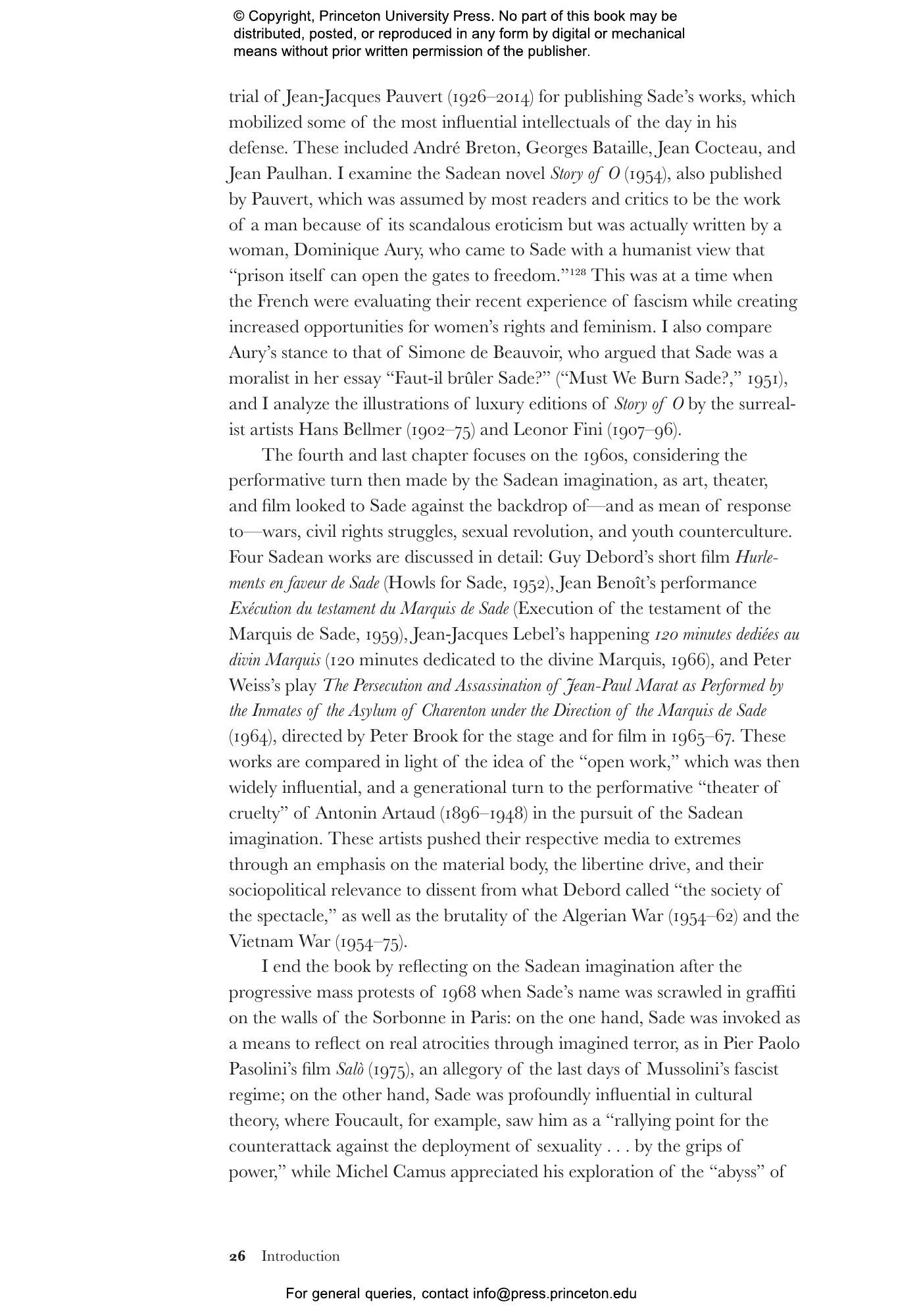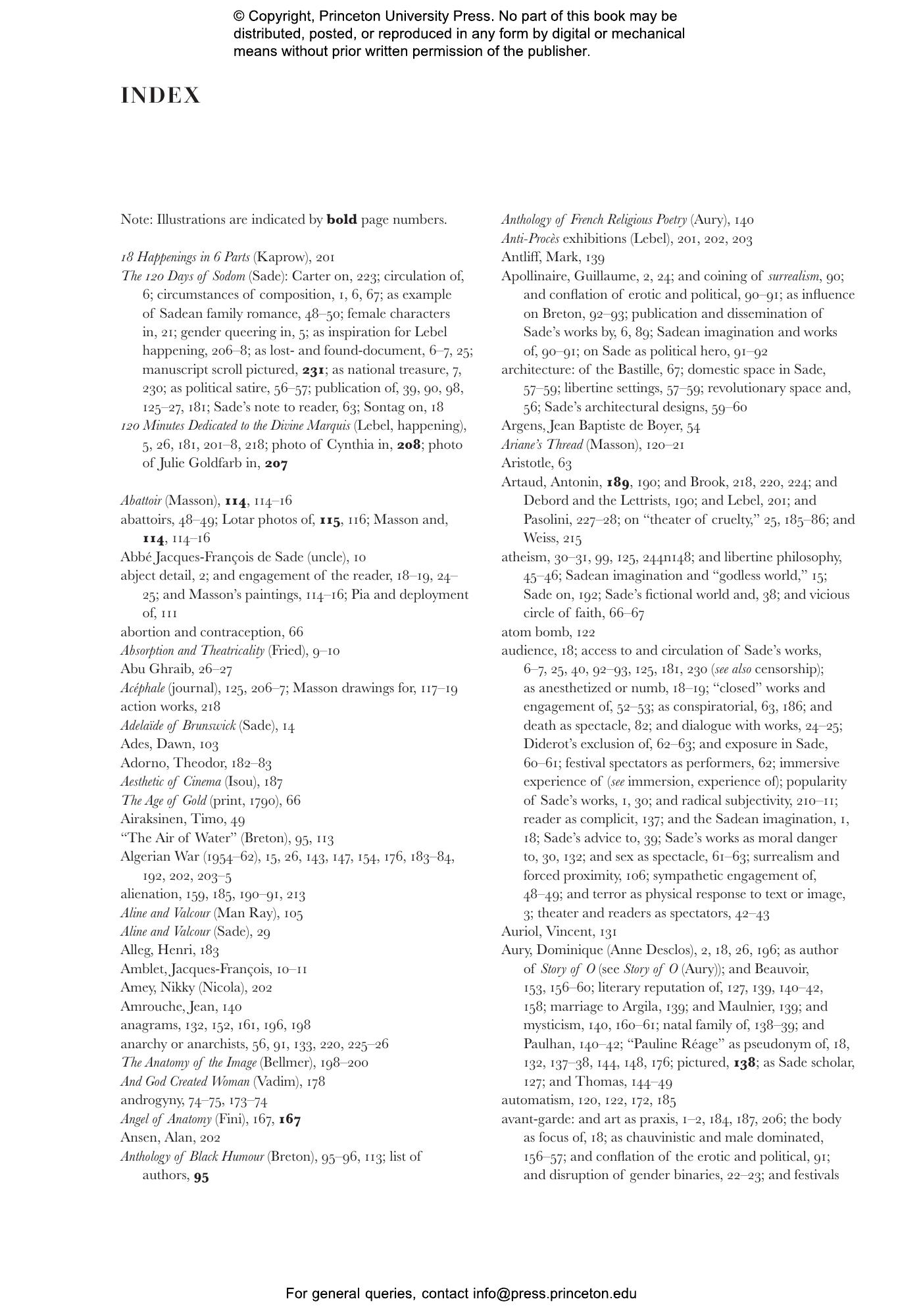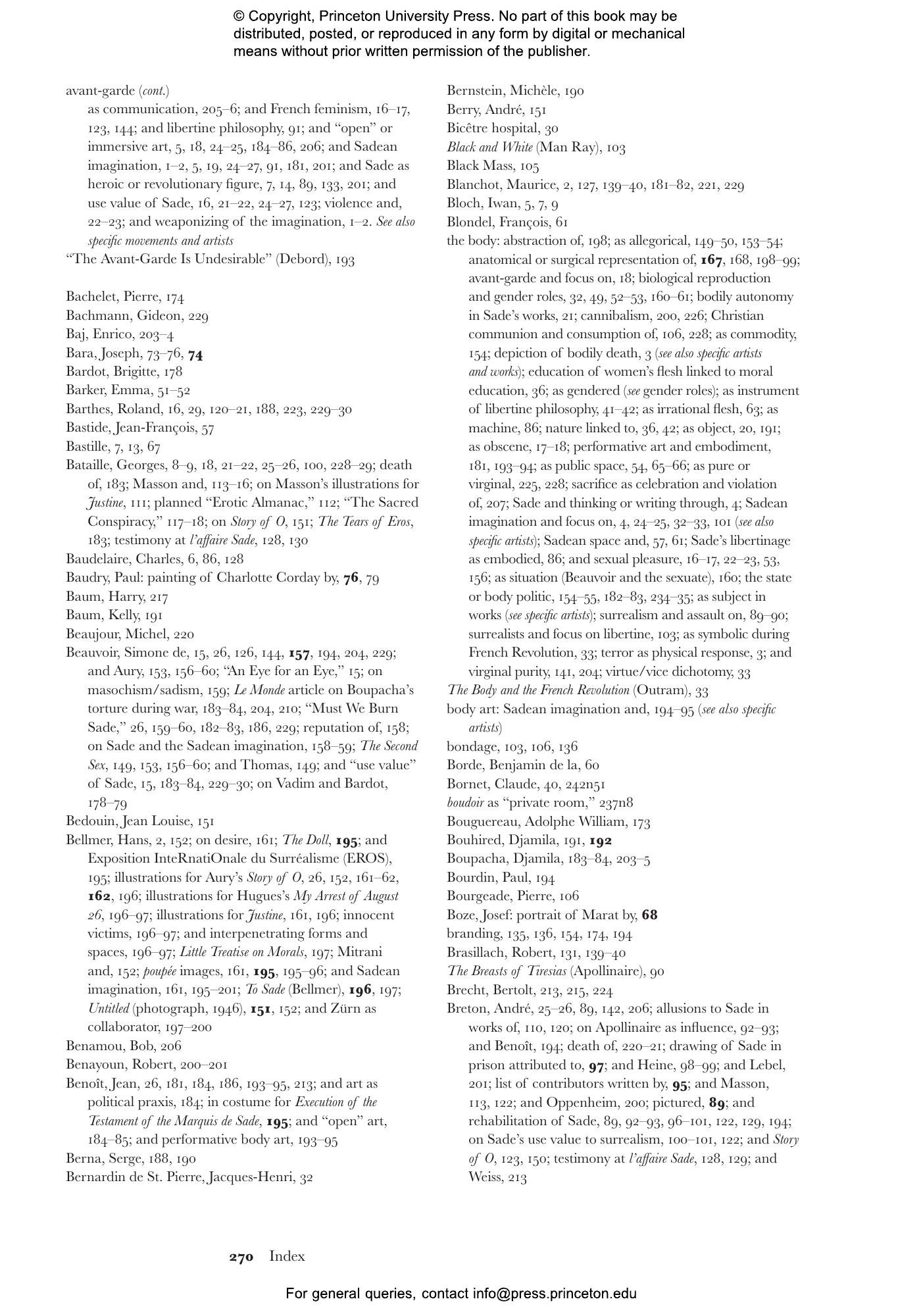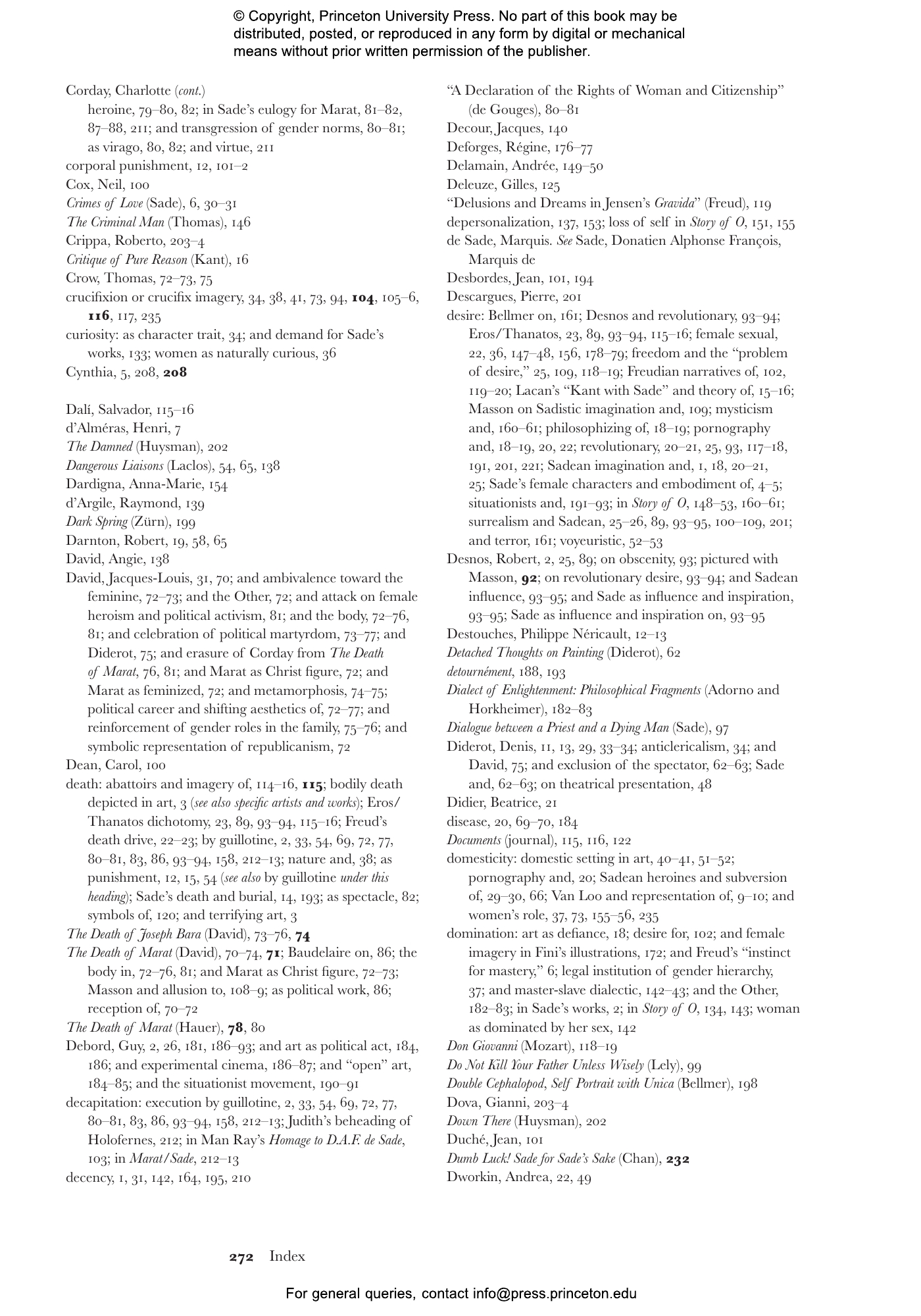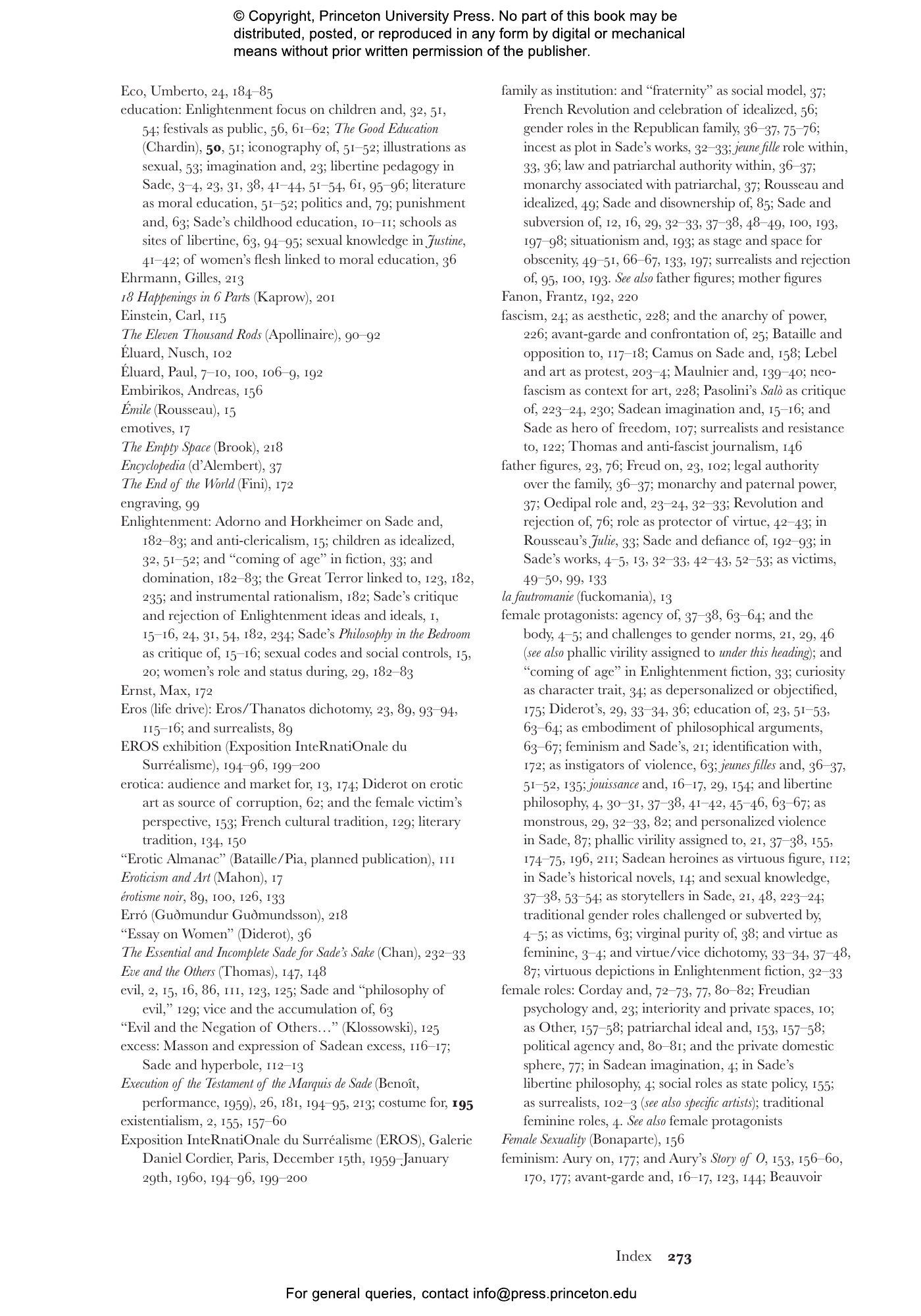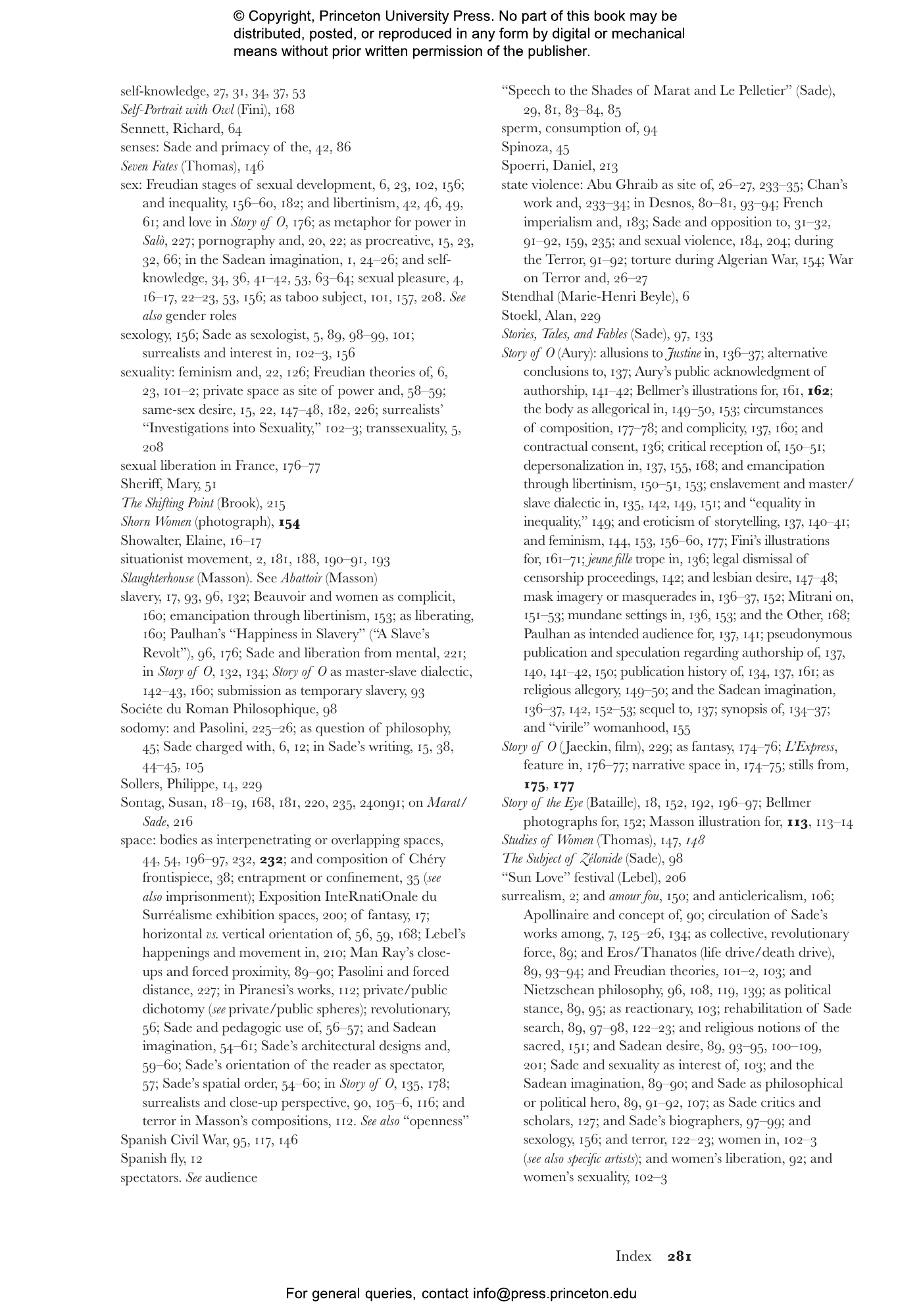The writings of the Marquis de Sade (1740–1814) present a libertine philosophy of sexual excess and human suffering that refuses to make any concession to law, religion, or public decency. In this groundbreaking cultural history, Alyce Mahon traces how artists of the twentieth century turned to Sade to explore political, sexual, and psychological terror, adapting his imagery of the excessively sexual and terrorized body as a means of liberation from systems of power.
Mahon shows how avant-garde artists, writers, dramatists, and filmmakers drew on Sade’s “philosophy in the bedroom” to challenge oppressive regimes and their restrictive codes and conventions of gender and sexuality. She provides close analyses of early illustrated editions of Sade’s works and looks at drawings, paintings, and photographs by leading surrealists such as André Masson, Leonor Fini, and Man Ray. She explains how Sade’s ideas were reflected in the writings of Guillaume Apollinaire and the fiction of Anne Desclos, who wrote her erotic novel, Story of O, as a love letter to critic Jean Paulhan, an admirer of Sade. Mahon explores how Sade influenced the happenings of Jean-Jacques Lebel, the theater of Peter Brook, the cinema of Pier Paolo Pasolini, and the multimedia art of Paul Chan. She also discusses responses to Sade by feminist theorists such as Simone de Beauvoir, Susan Sontag, and Angela Carter.
Beautifully illustrated, The Marquis de Sade and the Avant-Garde demonstrates that Sade inspired generations of artists to imagine new utopian visions of living, push the boundaries of the body and the body politic, and portray the unthinkable in their art.
Awards and Recognition
- Honorable Mention for the Aldo and Jeanne Scaglione Prize for French and Francophone Studies, Modern Language Association
Alyce Mahon is Professor of Modern and Contemporary Art History at the University of Cambridge. She is the author of Surrealism and the Politics of Eros, 1938–1968; Eroticism and Art; and Dorothea Tanning: A Surrealist World.
"The Marquis de Sade and the Avant-Garde [is] a book that is a treasure house of information and inspiration, at the same time scholarly and completely engaging. . . . An important work to add to your bookshelf; it will fascinate you, it will inspire you, and it will delight you."—Penelope Rosemont, Rain Taxi Review of Books
"Perceptive."—Allan Graubard, Leonardo Reviews
"[A] remarkable new book. . . . In this deeply researched study, Mahon moves gracefully from a thorough exposition and analysis of Sade’s life and work to his many critics. . . . She leaves her readers with the urgent reflection that Sade’s function has unceasingly been to provoke an assessment of life’s value. This is a timely and important book and should be widely read."—Katharine Conley, French Forum
"A beautifully written and meticulously researched defense of another kind. Mahon deftly narrates the history of Sade the person as well as what she calls the ‘Sadean imagination’. . . . Mahon’s study of Sade and defense of his texts as central to the legacies of the avant-garde are, no doubt, well-argued and deeply researched, and they make for a compelling read; the book is a significant and important contribution."—Angelique Szymanek, CAA Reviews
"This thought-provoking book explores how modern artists, writers, and intellectuals—male and female—harnessed the Sadean imagination to develop their own subversive stances. Mahon casts her net wide, from the surrealists to the experimental theater and happenings of the 1960s, to make a larger claim that artistic explorations of the darkest, intolerable sides of humanity are both necessary and illuminating."—Ewa Lajer-Burcharth, Harvard University
"Remarkable. No other book comes close to synthesizing the importance of Sade's thought to the avant-gardes, and no other scholar before Mahon has explored why the Sadean imagination could be captivating, even liberating, for women."—Katharine Conley, author of Surrealist Ghostliness
"Sade's writings emerge from these compelling and illuminating pages as a major force within the artistic and intellectual debates of the twentieth century. In Mahon's authoritative telling, the Sadean imagination inhabits the surrealist and post-surrealist aesthetics of terror and extends all the way to today's war on terror."—Mary Jacobus, author of Reading Cy Twombly: Poetry in Paint





